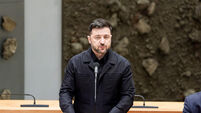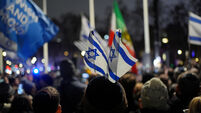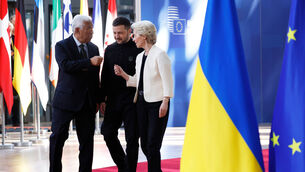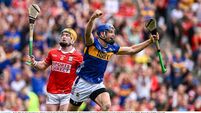Gaza Strip takes significant steps towards peace
However, a Palestinian shooting killed a Bulgarian truck driver in the West Bank and gunmen opened fire on workers near the border with Israel, suggesting some armed bands had not been brought into line with the day-old ceasefire called by militant groups.
But after Israel implemented a troop pullout from northern Gaza and agreed to pull out of Bethlehem on Wednesday, Prime Minister Ariel Sharon shrugged off calls to react to the shootings and called for patience.
“Even if the Palestinians were the fastest in the world and the most determined, you can’t expect them to destroy terrorism in a moment, since this morning,” Mr Sharon said.
In another reflection of disengagement, Mr Sharon was to meet his Palestinian counterpart in Jerusalem today, Palestinian sources said.
Several Palestinian militant groups announced a suspension of attacks against Israelis on Sunday. The Al Aqsa Martyrs Brigade, linked to Yasser Arafat’s Fatah movement, claimed responsibility for yesterday’s shooting. Fatah had earlier said Al Aqsa would halt attacks, but the militia consists of bands of gunmen who do not recognise a central authority, unlike the armed wings of Hamas and Islamic Jihad, the other signatories to the three-month truce.
Three hours later, Palestinians opened fire on workers building a security fence near the West Bank town of Qalqiliya, the military said.
No one was hurt, and soldiers returned fire.
Both sides have been sceptical the truce will hold, having been disappointed so many times before.
A dispute loomed over Israel’s demand that the Palestinian Authority dismantle the militant groups altogether. But there was a first glimmer of optimism as Israeli troops pulled out of the north Gaza town of Beit Hanoun, which had seen most of its farmland razed by Israeli bulldozers.
“You were late,” Mohammed Shabat, 65, pointing to the destruction, told Palestinian policemen who took over the Israeli positions. “But, God willing, we will bring this town back to the old days.”
Foreign Minister Nabil Shaath said Israel should withdraw from all West Bank towns within six weeks. “Things are promising and we must seize this moment,” he said.
The two largest Israeli dailies, Yediot Ahronot and Maariv, framed their front-pages in blue, normally reserved for editions on Jewish holidays. “Ceasefire,” read a banner headline in the Maariv daily, above a photo of soldiers hugging in Gaza. Yediot had soldiers posing on a tank with an Israeli flag.
The withdrawal scenes were reminiscent of the mid-1990s, when Israeli troops pulled out of Palestinian population centres under interim peace deals. Since fighting erupted in September 2000, Israel has reoccupied most of those areas; 2,414 people have been killed on the Palestinian side and 807 on the Israeli side.
Two new ingredients raised hope for the current ceasefire effort. Both sides, exhausted by the carnage, are grateful for the break in fighting and the US is intensively engaged in supervising implementation of the so-called “road map” to Mideast peace and Palestinian statehood by 2005.
Over the weekend, National Security Adviser Condoleezza Rice held talks with Israeli and Palestinian leaders on how to move forward.
On Sunday, the three major Palestinian factions announced a truce. The Islamic militant groups Hamas and Islamic Jihad agreed to lay down arms for three months, while Fatah announced a six-month ceasefire.
Israel reacted coldly to the truce announcements, refused to make blanket promises but pledged to halt targeted attacks of wanted Palestinians in areas now controlled by Palestinian police.













